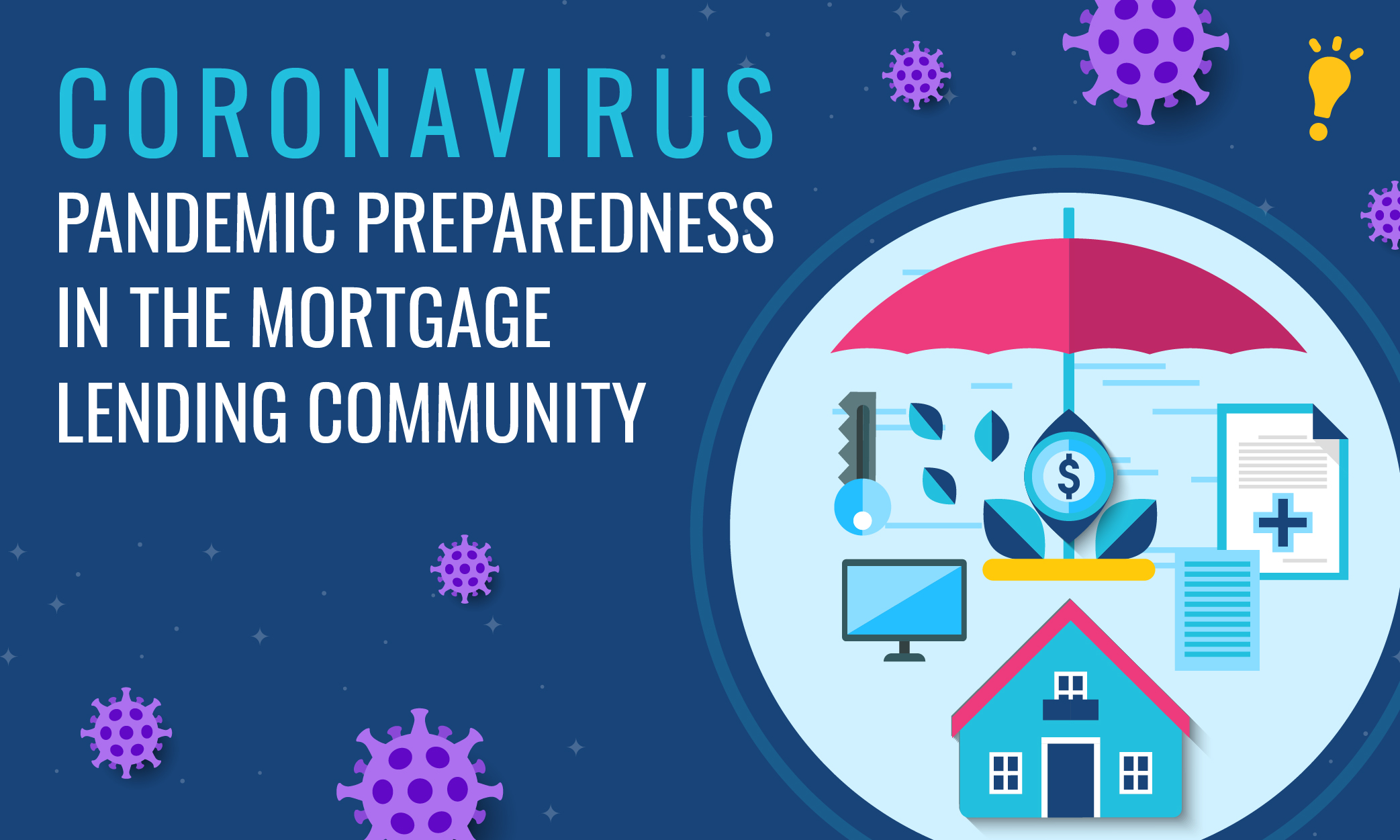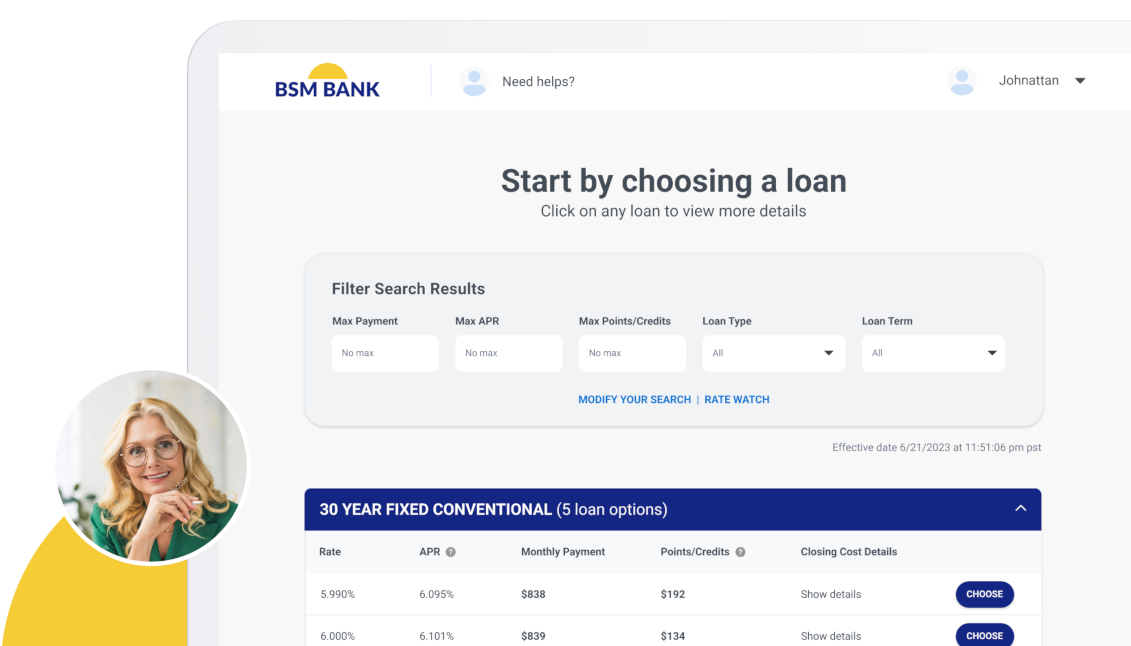What is the Coronavirus? Extreme measures to contain the disease have disrupted the world economy. This is likely to lower mortgage rates due to money pouring into the U.S. bond market. As the infection rate and death toll rise in the United States, companies are updating their emergency preparedness plans to ensure their technology infrastructure can support remote work arrangements without compromising cybersecurity. This article covers what the Coronavirus is, how it affects the mortgage industry, and the importance of including pandemics in a business continuity plan.
What is Coronavirus?
COVID-19 is a flu-like illness that affects the airways and lungs. It’s caused by the coronavirus. Symptoms include:
- High fever
- Coughing
- Shortness of breath
Scientists believe the virus is passed on through liquid droplets released during coughing. To prevent the spread of the disease, people are advised to wash their hands with soap and water frequently and avoid close contact with one another. There’s no treatment for the Coronavirus. However, healthcare workers aim to relieve the symptoms while victims recover.
COVID-19 and its Direct Impact on the Mortgage Industry
As the stock market reacts to the uncertainty of the Coronavirus threat, investors are moving their money to conservative U.S. bond markets. This has a chain reaction on mortgage-backed securities such as bonds, producing lower yields. As a result, mortgage rates also drop.
However, the rates passed on to consumers don’t fully reflect this yet. The key benchmark for mortgage costs, 10-year U.S. Treasury bonds reached 0.54% on March 12—down from 0.96% a week earlier. Because global investors consider the United States a safe haven, conservative investors will probably continue to flood the U.S. bond market.
Rates for home loans are at historic lows and dropped to 3.29% the week ending March 13, 2020. These historic lows open the market for home buyers with money to spend. However, with such a huge economic slowdown, the job market is likely to take a hit. Fewer jobs mean fewer buyers, which negatively impacts the mortgage market.
Benefits of Pandemic Preparedness
Pandemic comes from two Greek words, “pan” and “demos,” meaning all and people, respectively. Human history is full of pandemics that led to the deaths of tens of millions of people. Past pandemics included smallpox, cholera, measles, yellow fever, malaria, tuberculosis and Ebola.
According to one study, committing $4.5 billion per year would keep the world safer from pandemics. That includes provisions to bolster the U.S. national health system. In 1918, the Spanish flu killed 50 million people and may have killed that many more in 1919 to 1920. So, the potential return on investment seems incalculable. Despite the containment of SARS, Ebola and H1N1 influenza, there’s no room for complacency. For example, the World Bank estimates one pandemic as severe as the Spanish flu could cost up to $3 trillion.
Besides national preparedness plans, emergency plans for businesses help minimize the impact of a pandemic on customers, employees and the company’s bottom line. This is particularly true for the financial industry, including mortgage lenders.
Coronavirus Business Emergency Preparedness Plan
For businesses that want to include COVID-19 in their business continuity plan, the planning process should incorporate the following steps:
Subscribe to BeSmartee 's Digital Mortgage Blog to receive:
- Mortgage Industry Insights
- Security & Compliance Updates
- Q&A's Featuring Mortgage & Technology Experts
- Identify and document core services
- Identify how staff members will work, including telecommuting and cross-skills training
- Safeguard the health of employees
- Develop communication for suppliers, customers and employees
- Estimate impacts to cash flow, insurance and cost upticks
- Create contingency plans for core operations
- Test the plan, including backup and disaster recovery strategies
- Understand your regulatory and compliance requirements
A business continuity plan goes beyond a disaster recovery plan, which includes policies and procedures to recover key information technology systems. A business continuity plan takes all the resources of a company, including the people, into consideration.
Disaster Recovery and Total Business Continuity for Mortgage Lenders
Recovering from a natural or manmade disaster includes both disaster recovery for information systems and total business continuity for employees, customers and partners in the mortgage lending industry. The goal is to be able to resume business operations as quickly as possible following a disaster. It’s a bit different when you plan for business continuity during a pandemic, which could last for months or years.
Here are some questions to help you assess your readiness:
- Resilience: How resilient are your infrastructure and critical business functions? Do you have the redundancy and capacity needed to rebound quickly?
- Recovery: How will you restore critical business processes, if they fail?
- Contingency: How will you compensate for failed resilience and recovery plans?
Start with the FEMA Pandemic Influenza Continuity of Operations Template to begin building a pandemic into your business continuity plan. Account for the following in your plan:
- Resources: Keep paper and electronic records of public and government resource contacts for assistance and compliance.
- Communications: Outline a communication policy for important updates. Include protocols on how to reach managers for instructions and assignments.
- Coordinate: Create an incident repository to report incidents and response times.
- Refresh: Update contact information for key personnel and vendors.
- Prepare: Recovery time objective or RTO measures the duration of time it should take to recover after a disaster. It’s similar to a service level agreement. Review your RTO times so it’s easier to prioritize in a staffing shortage.
- Reflect: Log incidents to track points of confusion and failure. Once things are back to normal, you can use this information to improve your BCP.
Digital Mortgage Options
Some mortgage firms have already migrated to a digital office for document tracking and signing. A digital mortgage describes the process wherein a borrower completes each step online, from application through closing. It doesn’t require in-face meetings, which is ideal for remote transactions during a pandemic.
Business Continuity Compliance
Business continuity occurs when a business continuity plan has been executed properly. This is the payoff for the hard work needed to create backups and store them off-site, performing drills, and training employees on how to access their work and data files remotely. Audit compliance documents track the success of these processes against preset metrics. Automated tools can help key personnel update the documentation in real-time.
How to Prepare for a Pandemic
Preparing for a pandemic may mean stocking up on items at home and quarantining sick family members. The Harvard Business Review suggests that the Coronavirus pandemic could hit in three waves separated by a few weeks or months. During this time, your family might have to survive on your own. According to a study in BMC Public Health, 28% of healthcare workers said they would abandon their job to protect their families and themselves.
To prepare, stock up on over-the-counter medicines like vitamins, stomach medicine, cough and cold medication, and pain relievers. Extra vitamins can help your family stay healthy and boost their immune systems. It’s a good idea to keep several weeks’ supply of nonperishable food and water in case supply chains are also disrupted.
Get updates from BeSmartee sent directly to your inbox! Subscribe to our newsletter here.




